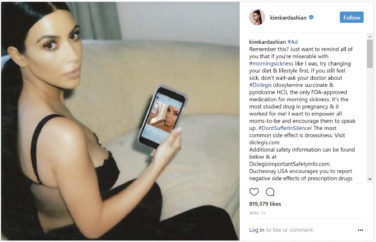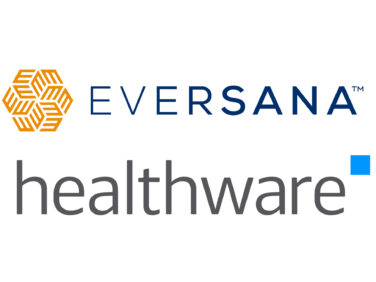Marketers, including healthcare marketers, have long attempted to capitalize on digital trends to connect with Millennial and Gen Z audiences—some successfully, others not so much. A common theme among the successful campaigns: authenticity. Millennials and Gen Z place high value on authenticity in marketing, far more than previous generations.1,2 “Growing up” with the internet and social media has helped them hone perceptive skills to navigate information (and misinformation) shared online. They have high standards for brand storytelling and little patience for campaigns that pander to generational stereotypes.
Knowing this, how can healthcare marketers ensure their message rings as genuine and relevant with Millennials and Gen Z? How can we promote our clients’ big idea to these audiences without that promotion feeling forced? A great place to start is through authentic language.
The Language of Millennials and Gen Z
Language is always evolving, and younger generations are the drivers of much of this evolution. Dictionaries are only records of language as it has been used and are slow to reflect changes. Prior to the internet age, most widely shared written language was formal, such as that found in newspapers and books. Formal written language has certain rules, often cataloged in grammar reference texts, and is rarely intended to reflect informal speech. The development of digital communication has driven the rapid evolution of informal written language, which is intended to do just that.3
Millennials saw the advent of digital technology and Gen Z have grown up immersed in it—both have spent their youth communicating through social media posts, online chats, and text messages. Thus, these younger generations have developed language heavily influenced by these mediums. One way this influence can be seen is in the typography used by these generations in texts and posts. They have adapted the available spectrum of typographical conventions to get closer to conveying conversational tone.3-7
For example, periods have evolved to be associated with sternness and slight hostility, so they rarely use them unless this is the tone they are aiming to convey.3-6 They also often use all lowercase letters, rather than capitalizing the first letter of the sentence, and then use capitalization sparingly to convey emphasis.6-7 Another way the influence of technology can be seen in their digital communication is the shortening of their language into acronyms and abbreviations for efficiency.3
A Brand That Gets It Right
Launched in 2014, Glossier, Inc. has since cemented its status as a beauty industry favorite among Millennial and Gen Z consumers. The rise of influencer trends on social media among younger generations inspired Glossier’s founder to create a digital-first DTC model which leaned into this new dynamic.8 Glossier continues to connect with its consumer base through their social media presence and interactions, and the brand’s official Twitter account provides a best practice example of using authentic language to do so. For example, see the tweets below.
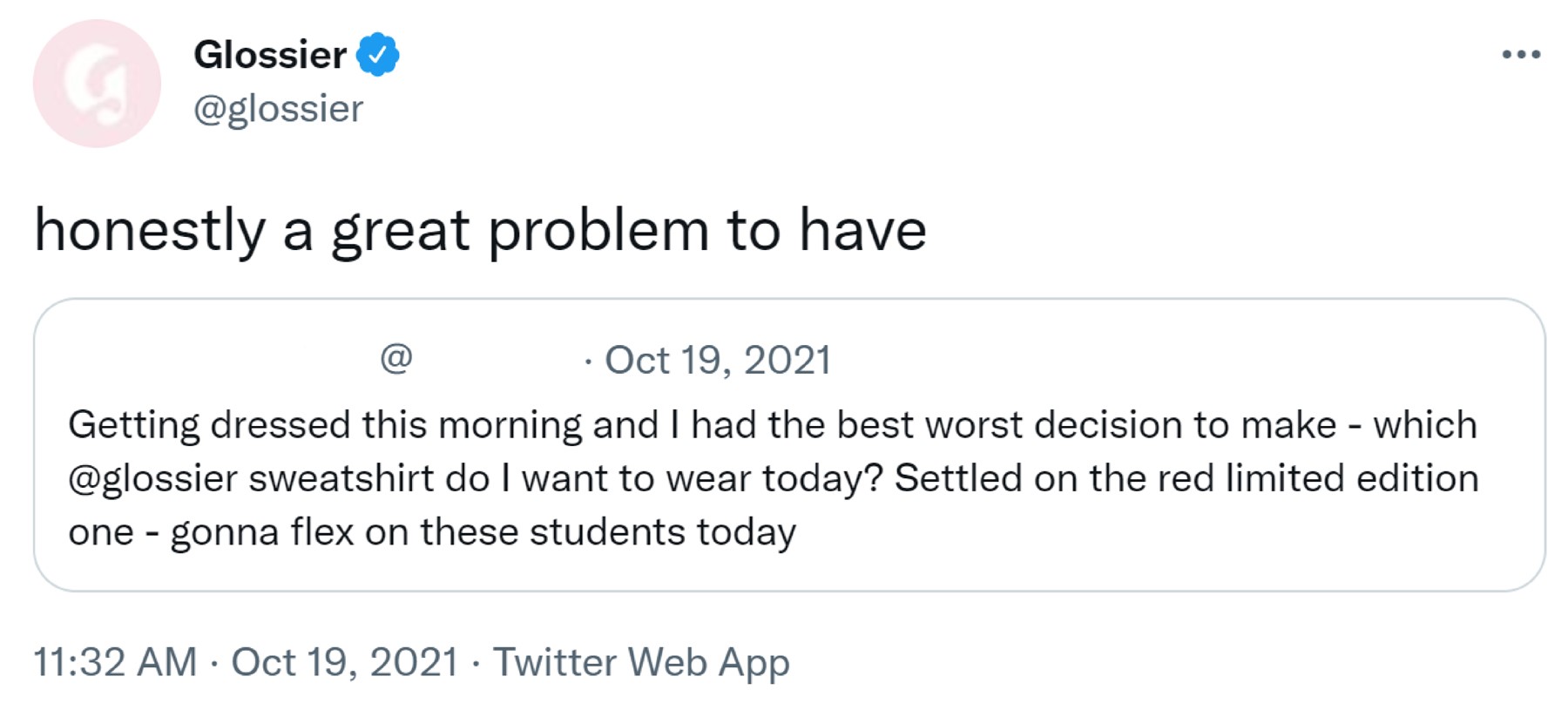
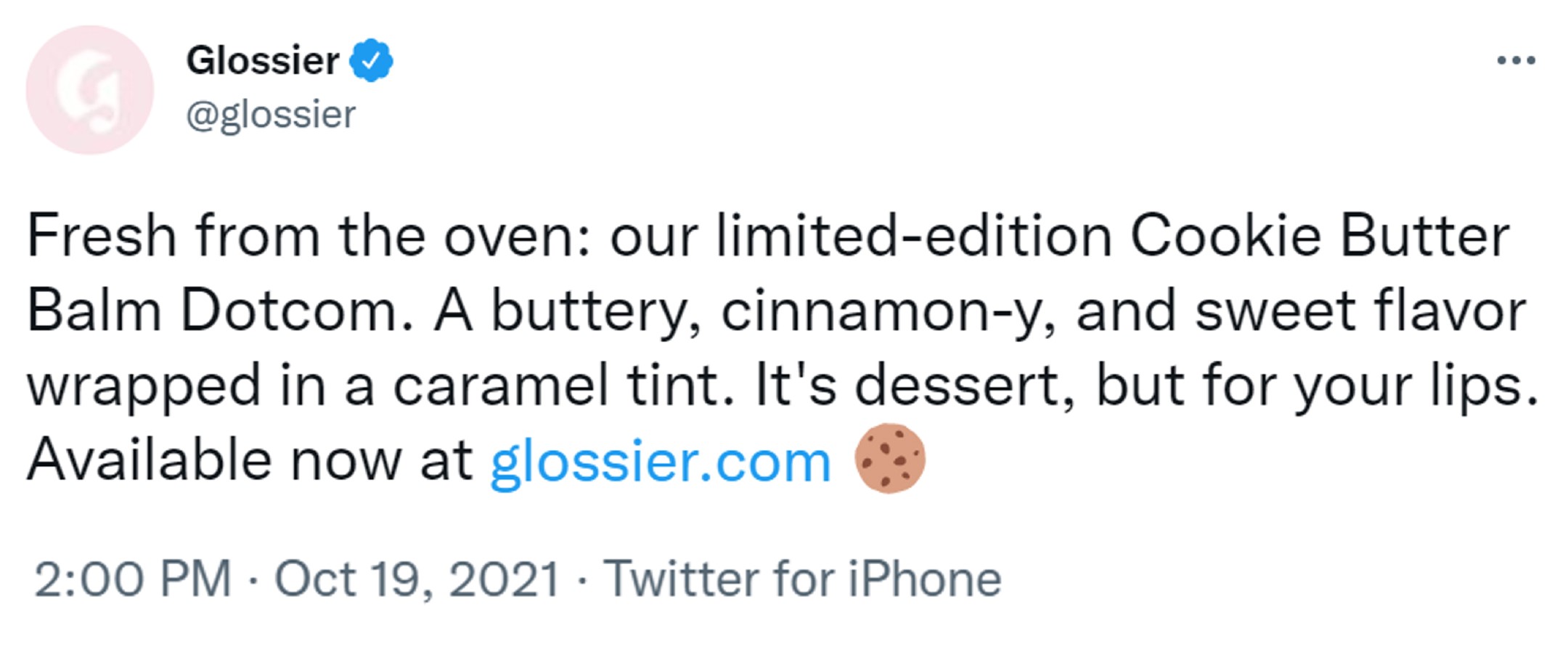 Notice the difference in typography between the first tweet, where the brand is responding to a consumer, and the second, where the brand is promoting the launch of a new product. Scrolling Glossier’s official Twitter account, one will notice that when communicating directly with consumers, the brand exclusively uses all lower-case letters.7 Glossier’s assimilation of this typography in communication with its consumers reinforces the authentic connection to their base. This assimilation also strengthens the brand’s authenticity as a voice of Millennials and Gen Z within the beauty industry because, in a sense, they speak the same language.
Notice the difference in typography between the first tweet, where the brand is responding to a consumer, and the second, where the brand is promoting the launch of a new product. Scrolling Glossier’s official Twitter account, one will notice that when communicating directly with consumers, the brand exclusively uses all lower-case letters.7 Glossier’s assimilation of this typography in communication with its consumers reinforces the authentic connection to their base. This assimilation also strengthens the brand’s authenticity as a voice of Millennials and Gen Z within the beauty industry because, in a sense, they speak the same language.
One can observe other typographical features of Millennial and Gen Z language in Glossier’s tweets which reinforce this authentic voice. In the example below, we again see the use of all lower-case writing, apart from the word “GOOD” in all caps.
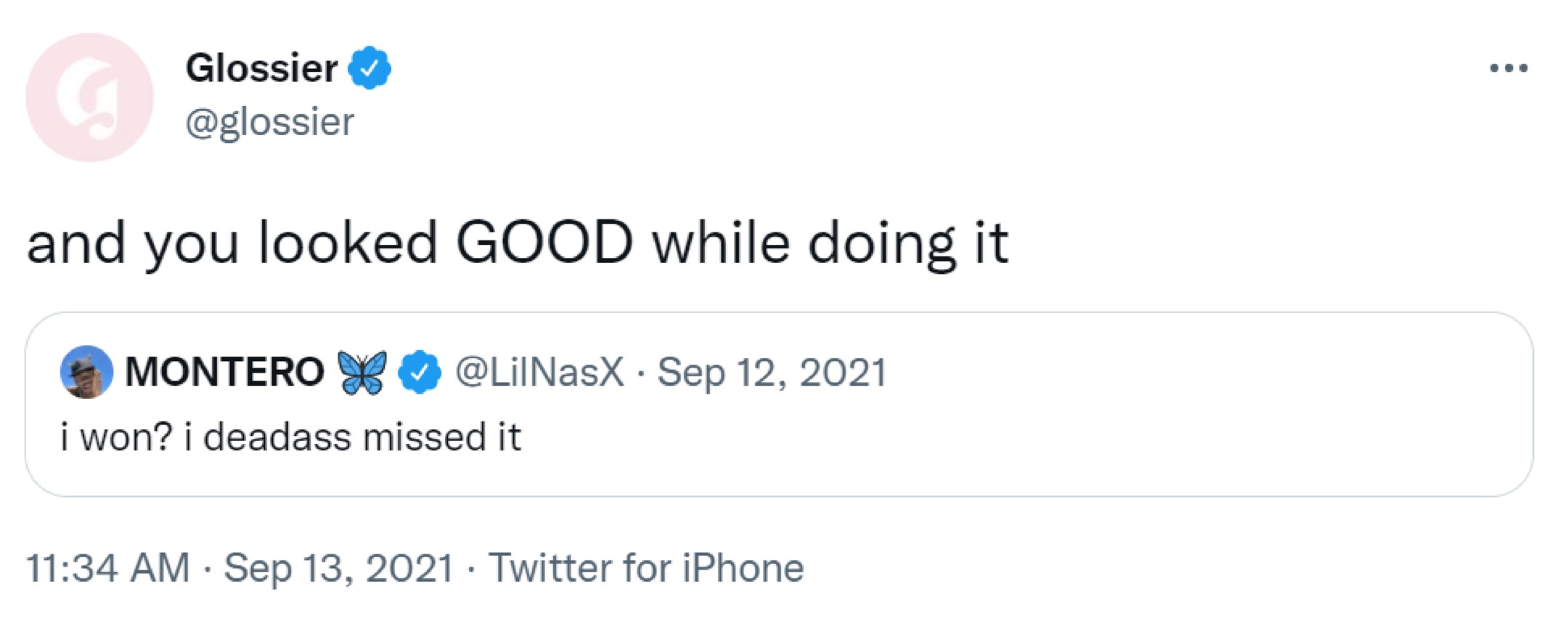 Atypical capitalization and punctuation are other typographical features of internet language used to convey contextual, syntactical, and tonal meaning.6 It can even be used to indicate volume (e.g., “lol” vs “LOL”). In this case, the capitalization of the word “GOOD” imparts stress on the word as one would in an utterance (i.e., spoken word or phrase). Atypical capitalization and punctuation are quite common among Millennials and Gen Zers, who have created these features to help express paralinguistic meaning in online conversation where formal written rules fall short.
Atypical capitalization and punctuation are other typographical features of internet language used to convey contextual, syntactical, and tonal meaning.6 It can even be used to indicate volume (e.g., “lol” vs “LOL”). In this case, the capitalization of the word “GOOD” imparts stress on the word as one would in an utterance (i.e., spoken word or phrase). Atypical capitalization and punctuation are quite common among Millennials and Gen Zers, who have created these features to help express paralinguistic meaning in online conversation where formal written rules fall short.
Reconnecting With Consumers Through Language
Another example of a brand using authentic language to connect with consumers is J.M. Smucker Company’s #JIFvsGIF campaign. In 2020, the well-known peanut butter brand, Jif, partnered with GIPHY, an online GIF database, to create a campaign that would settle a longstanding internet debate: the proper pronunciation of “GIF.” Though still considered a household name, the brand had lost traction among Millennial consumers in recent years, who instead were increasingly opting for peanut butter alternatives (e.g., almond butter). To reconnect with Millennials, Jif decided to create a campaign that would inject their brand into this ongoing linguistic dispute.
The term GIF, which stands for Graphic Interface Format, was originally coined by its creator, Steve Wilhite, who pronounced the term with a soft “g,” as in “giant.” As the file type became more widely used, an alternate pronunciation emerged using a hard “g,” as in “graphics.”9 While Gen Zers have likely grown up using the hard “g” pronunciation, Millennials have likely used both pronunciations at some point in their lives. Because Millennials observed the change from one standard pronunciation to the other firsthand, the hard “g” versus soft “g” debate is nostalgic for many of them.
Jif recognized the potential to capitalize on this language debate by creating a series of GIFs which visually represented both sides. The company also invited consumers to use the hashtag #JIFvsGIF to join in the conversation and share their view on the proper pronunciation of GIF. In addition, they created a limited-edition GIPHY x Jif peanut butter jar to be sold exclusively on Amazon for one day only (see below).10,11
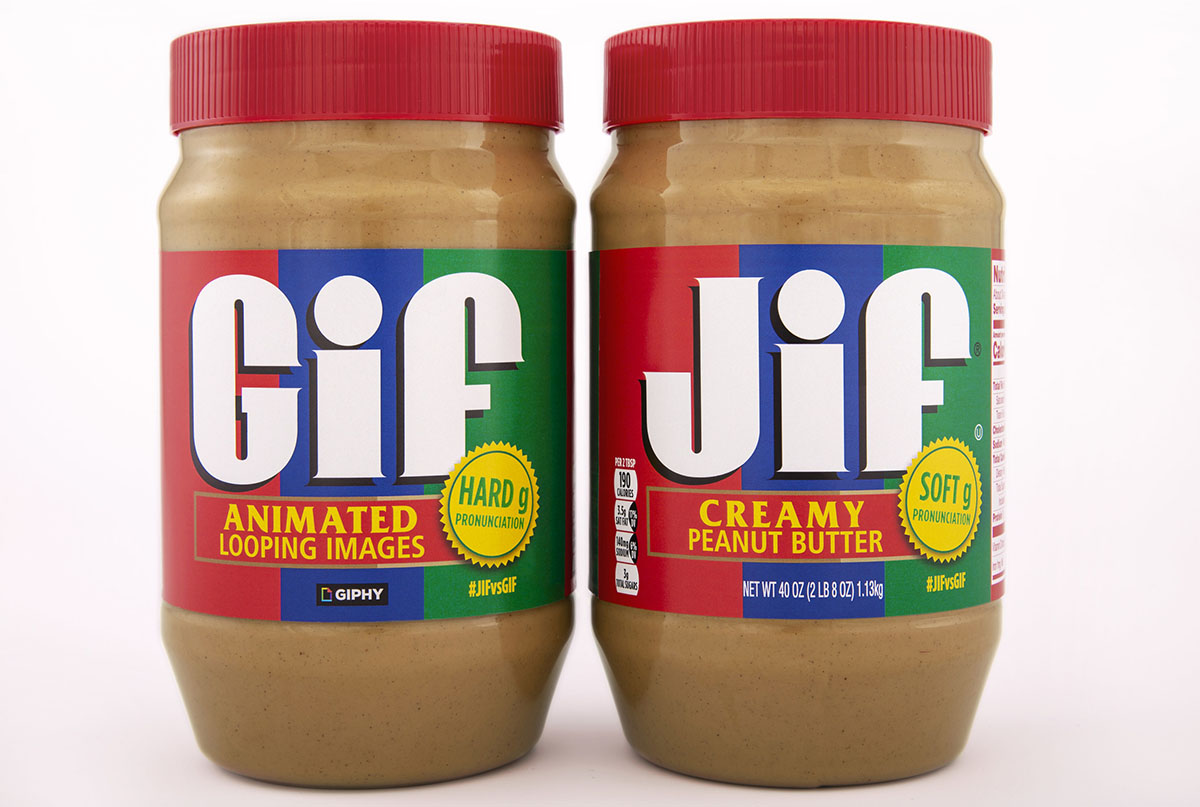
The #JIFvsGIF campaign was a resounding success—the company sold over 3,500 jars in a matter of hours and drove a 300% increase in Jif.com site traffic.12 The campaign also generated a significant amount of buzz on social media. Both hard “g” and soft “g” advocates joined in the discussion, and the hashtag generated over 180 million unique impressions. The campaign proved that even something as intangible as pronunciation could be used to forge a connection with consumers and that internet language can be a potent force to inspire a creative and efficacious campaign.
So, Let’s Talk about Healthcare
As Millennials and Gen Z grow older and begin to take control of their own health, it is imperative that healthcare marketers build a long-term connection with these audiences. While some campaigns in healthcare have successfully connected with these audiences, they rarely utilize existing language trends, such as those described above. Of course, the application of authentic language in marketing goes far beyond internet trends and typography.
Understanding how patients refer to their condition is essential to customizing materials and campaigns that resonate with these individuals. While conducting an analysis of online conversations by patients with juvenile idiopathic arthritis (JIA), we found that most of the time patients were instead referring to their condition as juvenile rheumatoid arthritis (JRA). Until recently, JIA was referred to as JRA in the medical community, but the condition was renamed to distinguish JIA as distinct from rheumatoid arthritis (RA).13
However, because this change in lexicon was so new, it had not yet been widely adopted by patients in the U.S.—even among Millennial and Gen Z patients who were diagnosed with JRA in childhood. Ultimately, this insight led to a broader strategic discussion of how to best incorporate this language into educational and marketing materials while remaining medically accurate and relevant.
The internet is a dynamic place where trends—including linguistic ones—arise spontaneously and fade as quickly. Marketing opportunities pop up in unexpected ways online because conversation and language evolve so rapidly. This is especially true of health-related language, since new medical advances influence the conversation. However, healthcare marketers have access to a plethora of natural language resources that can aid in discovering authentic language to inspire and develop consumer campaigns, including the application of linguistic analysis and social listening. Monitoring digital discussions on a regular basis is the first step to discovering content which may appeal to younger generations, while linguistic analysis can enable marketers to tease out language features to help their message resonate most effectively.
References:
1. Cassidy, P. “Survey Finds Consumers Crave Authenticity – and User-Generated Content Delivers.” SocialMediaToday. November 21, 2017. Accessed January 11, 2022. https://bit.ly/3JZNlYu.
2. Talbot, P. “Best Practices for Marketing to Gen-Z.” Forbes. March 23, 2021. Accessed January 11, 2022. https://bit.ly/3smSRhE.
3. McCulloch, G. Because Internet. Riverhead Books; 2019.
4. Fox K. “Dr Sarah Ogilvie: ‘Generation Z are savvy – but I don’t get all their memes.’” The Guardian. November 20, 2021. Accessed January 11, 2022. https://bit.ly/3HmwOfn.
5. Luzong, A. “Language Changes, Deal With It: Gen Z’s Paralinguistics and What It Can Teach Us About Language.” A Little Bit Human. May 31, 2021. Accessed January 11, 2022. https://bit.ly/3hgwaFF.
6. Peters, L. “This Tweet Breaks Down the Groundbreaking Ways Millennials Invented Their Own Language.” Bustle. March 7, 2018. Accessed January 11, 2021. https://bit.ly/3JVQhFs.
7. Randall, J. “why are the kids writing in all lowercase? [sic]” Julia Randall, writing tutor & essay coach blog. Posted April 14, 2020. Accessed January 11, 2021. https://bit.ly/3hkllT2.
8. Turk, V. “How Glossier Turned Itself Into a Billion-Dollar Beauty Brand.” Wired. June 6, 2020. Accessed January 11, 2022. https://bit.ly/3pjerBD.
9. Locker, M. “Here’s a Timeline of the Debate About How to Pronounce GIF.” TIME. February 6, 2020. Access January 11,2022. https://time.com/5791028/how-to-pronounce-gif.
10. J.M. Smucker Company. “From the Choice of Choosy Moms to That Jif’in Good.” May 1, 2020. Accessed January 11, 2022. https://www.jmsmucker.com/news-stories/stories/22782.
11. J.M. Smucker Company. “‘JIF’ or ‘GIF’? Jif and Giphy Say There’s Only One Jif – and It’s Peanut Butter.” February 25, 2020. Accessed January 11, 2022. https://www.jmsmucker.com/brand-news?page=2&news=22771.
12. WARC. “Agree to Disagree: Jif Settles the Jif vs. Gif Debate.” 2021. Accessed January 11, 2022. https://bit.ly/3BQPOBA.
13. Arthritis Foundation. “Juvenile Idiopathic Arthritis (JIA).” Accessed January 11, 2022. https://www.arthritis.org/diseases/juvenile-idiopathic-arthritis.







